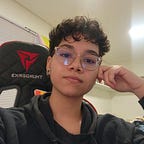Learn Android Development
Theming in Jetpack Compose: Enhance the Visual Appeal and User Experience
By adopting theming best practices and taking advantage of Compose’s built-in tools
Hello, fantastic person on the internet! I hope you’re doing well.
Among the many features that make Jetpack Compose a game-changer, theming stands tall as a crucial component that can transform not just the look, but also the feel of your application.
Imagine that you’re building an app, and you want it to have a distinct, polished appearance that resonates with your brand or app’s concept.
This is where theming in Compose comes into play. It empowers you to create visually stunning, consistent, and highly customizable user interfaces.
Choose Your Color
You can select any color for your app, but Google provides to us with a handy tool on their website that allows us to check colors and export the color.kt file.
To accomplish this, visit the Material Theme Builder and enter your desired color code. I have chosen the color #825500, and it generates a whole range of other colors for me, including both the dark and light themes.
Next, export the generated file to your UI package. It will look something like this:
See in the practice
You can use the uiMode parameter in your preview annotation to set the theme you want to check:
Understanding Some Names
If you are just starting to learn Android, or if you have some experience, you will remember the terms primary and secondary. It’s very important to know when to use each of them.
- Primary serves as the foundational color, employed for essential elements like prominent buttons and active states.
- Secondary colors are utilized for less conspicuous components within the user interface, such as filter chips.
- Tertiary colors are employed to introduce contrasting accents, while neutral shades are reserved for the app’s backgrounds and surfaces.
Knowing that you can now choose the color of your app. If you check the Material Theme Build, you will see when to use each color:
Setting it up is quite simple: just navigate to your component and reference your custom colors:
Adding dynamic colors
Dynamic color experiences are crafted using M3 color schemes. This algorithm generates customized colors based on a user’s wallpaper, which are then applied to their apps and the system UI.
Dynamic theming enhances the personalization of your apps and offers users a unified and seamless experience with the system theme.
Navigate to your theme file to verify if you can utilize dynamic colors:
Defining typography
Compose integrates the Material 3 Typography class with the existing TextStyle and font-related classes, making it possible to model the Material 3 type scale.
The Typography constructor provides defaults for each style, allowing you to omit any parameters you don’t wish to customize. For additional details, refer to typography styles and their respective default values.
In your UI package, navigate to your Type class and customize it as you desire:
Now, return to your theme file and configure the typography as per your customization:
To make use of custom typography, go to your Text component and reference your class:
Shapes
Some people don’t know, but you can also customize your shape in the same way as typography. Simply create a file called shape and define it as you wish:
Set it into your Material Theme:
Conclusion
Theming in Jetpack Compose represents a powerful and flexible way to enhance the visual appeal and user experience of your Android applications.
By adopting theming best practices and taking advantage of Compose’s built-in tools, you can streamline the design process, maintain consistency across your app, and deliver a polished and professional experience to your users.
All the code and examples it is in this repository.
Happy coding ❤
Please let me know what you think in the comments…
